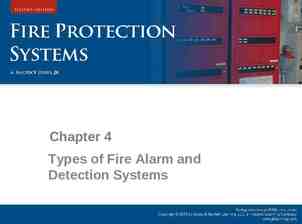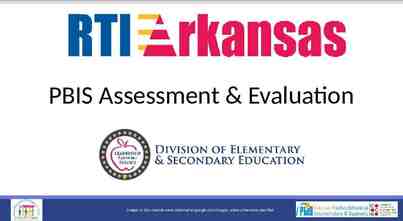GC x GC With Valve-Based Modulation John Seeley Oakland
46 Slides2.97 MB

GC x GC With Valve-Based Modulation John Seeley Oakland University Department of Chemistry Rochester, MI 48309 [email protected]

Seminar Structure 1. The Nature of a GC x GC Separation 2. An Examination of Low Duty Cycle Modulation 3. Direct Diversion Modulation With Multiport Valves 4. Differential Flow Modulation With Multiport Valves 5. Differential Flow Modulation With Fluidic Devices 6. Direct Diversion Modulation With Fluidic Devices 7. Summary

The Key Characteristics of a GC x GC Separation I. A GC x GC separation is a normal GC separation (the primary separation) followed by a steady repetition of secondary GC separations. II. The selectivity of the 1o stationary phase and 2o stationary phase are different. III. The timescale of the 2o separations (the modulation period) is small enough to not substantially diminish the resolution achieved by the 1o separation. IV. A consistent portion of each peak emerging from 1o is transferred to the secondary column and the total area of the 2o is representative of the component concentration. V. The width of the pulses entering the 2o column should be much less than the modulation period.

What is Valve-Based Modulation? Rough Definition: GC x GC modulation through the precise control of flow using one or more valves. Contrast To Thermal Modulation Valve-Based Modulation does not involve concentrating the primary effluent; thus, manipulating temperature is unnecessary. If done correctly, valve-base modulators should be simpler, less costly, smaller, and more rugged than thermal modulators. High 2o resolution with valve-based modulation involves a loss of analyte and/or non-optimal flows.

But Is It “Comprehensive” GCxGC? “Interfaces based upon a series of valves that produce similar results also have been developed. Because these valve-based interfaces vent primary-column effluent to a certain extent, they violate the first rule of a comprehensive 2-D GC separation — having the entire sample undergo separation in both dimensions and reach the detector. Thus, strictly speaking, they are not comprehensive 2-D GC interfaces.” LCGC, 20 (9), 2002 Other authors and manuscript reviewers made similar statements with these key objections Valve-based GC x GC is not quantitative. Valve-based GC x GC is only capable of analyzing standard mixtures. Valve-based GC x GC is only capable of analyzing VOCs.

What is the impact of the missing effluent? Duty Cycle: Fraction of modulation period where 1o effluent is sampled. Thermal modulators have a duty cycle of 1. Valve-based modulators have duty cycles 1.

Constraints On The Modulation Period The corrupting influence of the missing effluent can be minimized by sampling the primary effluent more frequently (this is essentially Shannon’s Sampling Theorem). For GC x GC, this means ensuring that the modulation period, PM, is not too large. However, the modulation period is already constrained by the desire to maintain the primary separation, and this constraint is imposed upon all modulation methods. So the question is Do duty cycles 1 impose a new and significant limitation on GC x GC modulation?

Constraints On The Modulation Period For optimum GC x GC performance, a constraint is placed on the modulation period. This constraint is best quantified by the ratio of the modulation period to the primary peak width. z PM / 1 Seeley (2002) MR 4 1 / PM 4/ z Modulation Ratio: Marriot et al. (2006) Modulation Constraint Cause of Constraint GCxGC Lore (19?) MR 4 (3 to 4 peaks) Maintenance of 1o Separation Murphy et al. (1998) MR 2 Keep 1o Broadening below 30% Seeley (2002) MR 2.67 Accurate Quantitation For Duty Cycles 1 MR 3.0 Accurate Quantitation For Trace Compounds With Duty Cycles 1 Marriott el al. (2006)

Modulation Ratio And 1o Peak Broadening The classical requirement of MR 4 keeps 1o broadening less than 10%. The Murphy restriction for MR 2 allows for broadening up to 30%. The low duty cycle restriction (MR 2.67) keeps 1o broadening less than 20%. Using lower duty cycles actually reduces the average 1o broadening. This observation was also made by Bartle et al. (2003).

Modulation Ratio And Inconsistent 1o Peak Transfer MR 2.67 essentially eliminates area fluctuations due to low duty cycle modulation. However, low duty cycle modulation can exhibit large area fluctuations if the primary dimension is undersampled (i.e., MR 2). Complete 1o sampling (i.e., d 1) is much more robust toward undersampling.

Summary of Modulator Requirements The additional constraint placed on RM from low duty cycle modulation does not create the need for vastly different modulation periods. However, low duty cycle modulation can lead to a substantial loss in signal when compared to thermal modulation.

Direct Diversion Modulation With A 4-Port Diaphragm Valve Low duty cycles required (d 0.1). Diaphragm valves impose temperature limitations.

Differential Flow Modulation Primary Effluent Collection Secondary Column Injection Primary Column Exhaust Primary Column Exhaust Secondary Flow, 20 ml/min Primary Effluent, 0.75 ml/min Secondary Flow, 20 ml/min Primary Effluent, 0.75 ml/min Sample Loop Sample Loop Secondary Columns Secondary Columns Higher duty cycles possible (d 0.9). Diaphragm valves impose temperature limitations. Higher secondary column flows are required.

Modulating Diaphragm Valve

Dual-Secondary Column Comprehensive TwoDimensional Gas Chromatography (GC x 2GC) High-Speed Diaphragm Valve 20 µl loop 1 Hz Injection Frequency Primary Flow 0.75 ml/min Sample Inlet Exhaust 15 m DB-624 Secondary Flow 20 ml/min 5 m DB-Wax FID 1 5 m DB-210 FID 2

2-D Chromatograms from a mixture of alkanes, 2-ketones, 1-alcohols, 2alcohols, 2-methyl-2-alcohols, acetates, alkyl aromatic, and aldehydes (all straight chain). 2.90 DB-Wax 2.65 2.40 2.15 1.90 2.90 DB-210 2.65 2.40 2.15 1.90 0 100 200 Primary Retention Time (s) 300 400

Breath 2.90 DB-Wax ethanol methanol 2.65 acetone 2.40 1.5 L sampled Full Scale 500 isopropanol xylenes benzenetoluene nonanal acetaldehyde decanal pentanone hexanal 2.15 limonene saturated and monounsaturated hydrocarbons 1.90 3.00 butanone DB-210 hexanal nonanal acetone propanal 2.75 decanal pentanone isopropanol acetaldehyde toluene benzene 2.50 xylenes ethanol limonene methanol 2.25 saturated and monounsaturated hydrocarbons 2.00 0 100 200 300 Primary Retention Time (s) 400 500

What Are The Strengths of Differential Flow Modulation? It’s Simple: mostly “off-the-shelf” parts, no consumables High sample transfer between 1o and 2o columns Good resolution with thin-film secondary columns Best suited for high-speed separations with low modulation periods What Are The Limitations Of Differential Flow Modulation? High secondary flows limits the direct implementation of MS Flow disturbances upon switching Temperature limitations due to diaphragm valve

A Fluidic Modulator To Address Temperature Limitations Three-port valve is outside oven. F2’’ F1 F2’ 0 Simultaneous fill and flush. Generates pulses by switching valve. Minimal pressure disturbances. No inherent temperature limitations.

Modulation of a Pentane Peak F1 1.0 ml min-1 F2 20.0 ml min-1 Peak widths near the theoretical limit are observed

Our Most Common GC x 2GC Setup H2 Carrier Gas Constant Flow Mode 1o flow 1.0 cm3 min-1 2o flow 20.0 cm3 min-1 2o Column split 1:1 2o Injection Period 1.5 s

Gasoline Aromatic Analysis Accuracy and precision similar to GC-MS and thermal modulation GCxGC

1 L of Northern Michigan Air

A Simpler Fluidic Modulator

Pure Diesel

B100 Soy

B5 Soy

Quantitative Precision for B20 Commercial Biodiesel Blend Calibration for B1 to B20 Soy Biodiesel Blends y 47.651x - 3.2694 2 R 0.9999 Total Peak Area Total FAMES 1000 900 800 700 600 500 400 300 200 100 0 0 5 10 15 Vol % FAME 20 25 Run Day % FAME (vol) 1 11-May 19.4 2 11-May 19.7 1 12-May 19.9 2 12-May 20.0 1 12-May 20.2 2 12-May 20.2 1 15-May 19.8 2 15-May 20.3 1 15-May 20.4 2 15-May 20.8 Avg 20.1 Std Dev 0.4 RSD 1.9

A Microfluidic Deans Switch As A GC x GC Modulator Agilent has a Deans switch etched on a plate. It is a rugged device with a very wide temperature range. Direct diversion modulation with no temperature restrictions.

Our Experimental Studies Confirm Our Original Theoretical Analysis: Low duty cycle modulation is quantitative provided MR 2.5.

High speed separations with low modulation ratio (MR 1.5) show increased area fluctuations. Standard speed separations have accuracy and precision comparable to thermal modulation GC x GC, DF-GCxGC, and GC-MS

0.2% Diesel Fuel in Hexane

0.2% Diesel Fuel in Hexane

Summary A variety of simple valve-based modulators have been developed. Fluidic devices seem to have the greatest flexibility. Valve-based modulation is as quantitative as GC-MS or Thermal Modulation GC x GC. Valve-based modulation can analyze a wide range of compounds from permanent gases to barely volatile compounds (we’ve looked at C40). The column stationary phase is the source of the temperature constraint. Valve-based modulation does not require substantial additional consumables (perhaps a little more carrier gas). Differential flow modulators should produce a similar sensitivity enhancement as thermal modulation if an FID is used. This would not be the case for mass spectrometric detection. Thermal modulation should always generate better 2 o resolution. But the difference will get smaller as the speed of the separation is increased.

Some of Our Publications On GC x GC Differential Flow Modulation With Diaphragm Valve J. V. Seeley, F. Kramp, C.J. Hicks, "Comprehensive Two-Dimensional Gas Chromatography Via Differential Flow Modulation", Analytical Chemistry, 72, 4346-4352, 2000. J. V. Seeley, F. J. Kramp, and K. S. Sharpe, “A dual-secondary column comprehensive two-dimensional gas chromatograph for the analysis of volatile organic compound mixtures”, Journal of Separation Science, 24, 444-450, 2001. J.V. Seeley, F.J. Kramp, K.S. Sharpe, and S.K. Seeley, "Characterization of gaseous mixtures of organic compounds with dual-secondary column comprehensive two-dimensional gas chromatography", Journal of Separation Science, 25, 53-59, 2002. Theoretical Aspects of GC x GC J.V. Seeley, "Theoretical Study Of Incomplete Sampling Of The First Dimension In Comprehensive Two-Dimensional Chromatography", Journal of Chromatography A., 962, 21-27, 2002. J.V. Seeley, N.J. Micyus and S.K. Seeley, “A Method for Reducing the Ambiguity of Comprehensive Two-Dimensional Chromatography Retention Times”, Journal of Chromatography A, 1086, 171-174, 2005. Differential Flow Modulation With The Dual-Loop Flow Switching Modulator P.A. Bueno, Jr. and J.V. Seeley, “A Flow-Switching Device for Comprehensive Two-Dimensional Gas Chromatography”, Journal of Chromatography A, 1027, 3-10, 2004. R.W. LaClair, P.A. Bueno, Jr. and J.V. Seeley, “A Systematic Analysis of A Flow-Switching Modulator for Comprehensive Two-Dimensional Gas Chromatography”, Journal of Separation Science, 27, 389-396, 2004. J.V. Seeley, N.J. Micyus and J.D. McCurry, “Analysis of Aromatic Compounds in Gasoline with Flow-Switching Comprehensive Two-Dimensional Gas Chromatography”, Journal of Chromatography A, 1086, 115-121, 2005. Differential Flow Modulation With The Simple Flow Switching Modulator J.V. Seeley, N.J. Micyus, J.D. McCurry, and S.K. Seeley, “Comprehensive Two-Dimensional Gas Chromatography With a Simple Fluidic Modulator”, American Laboratory News, 38, 24-26, 2006. Low Duty Cycle Modulation With A Deans Switch J.V. Seeley, N.J. Micyus, S.V. Bandurski, S. K. Seeley, J.D. McCurry, “Microfluidic Deans Switch for Comprehensive Two-Dimensional Gas Chromatography” Analytical Chemistry, 2007, In Press.

















